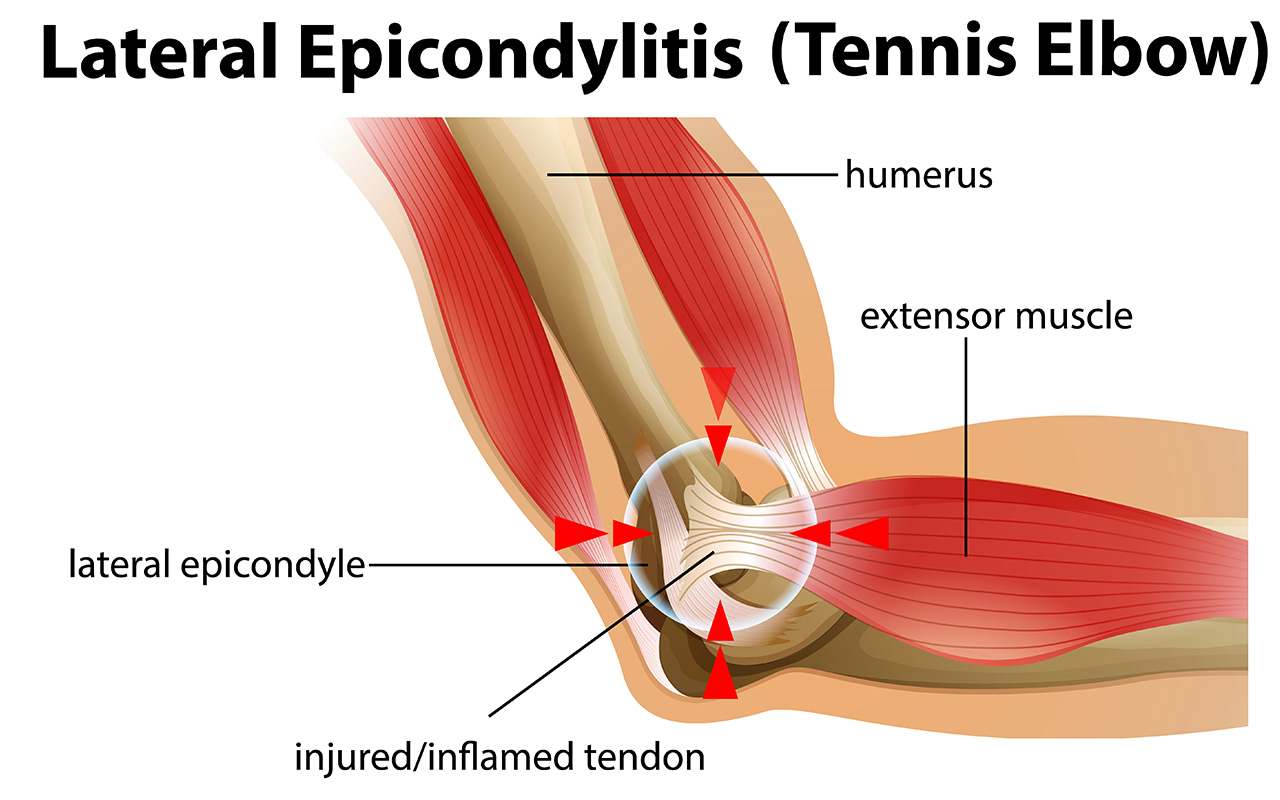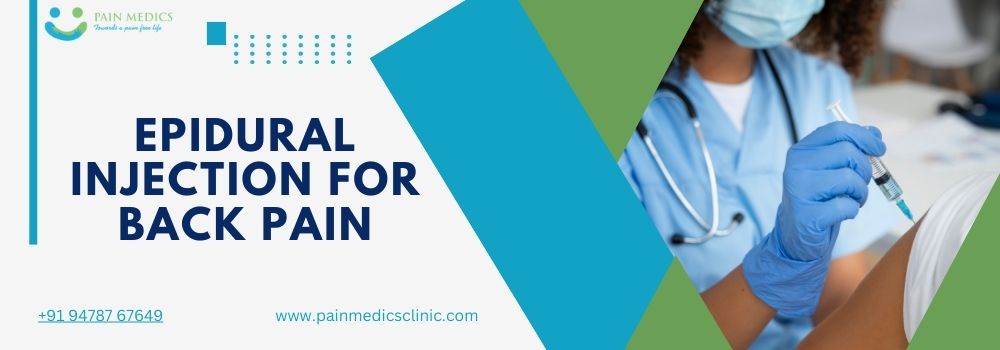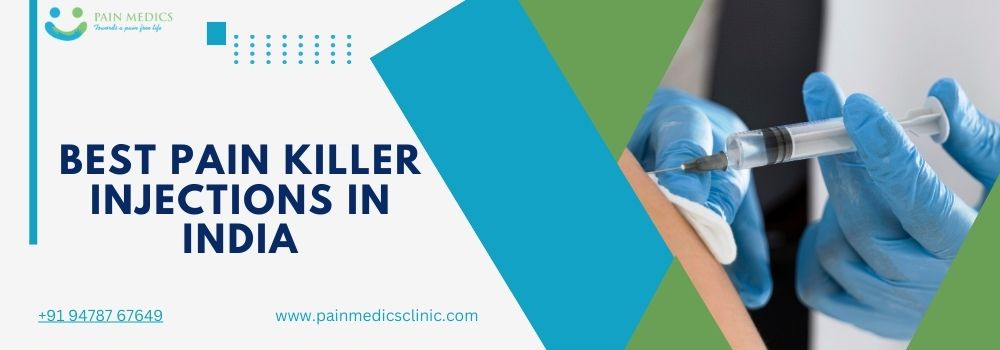Tennis Elbow Pain, also known as lateral epicondylitis, is a painful condition involving tendons on the outside of the elbow. A tendon is a fibrous tissue that connects a muscle to a bone. It acts as an anchor for the muscle. It happens when the tendons in your elbow are overused, usually from repetitive wrist and arm movements. Tennis elbow is not just caused by playing tennis. It can be caused by any activity, like painting, typing, lifting, or even gardening can cause tennis elbow. The pain can range from mild to severe, making it hard to grip, lift, or even shake hands.
People between the ages of 30 to 50 are more likely to get tennis elbow, especially if their work or hobbies involve frequent arm movement. The good news is, with proper treatment and expert care, the pain can be managed effectively.
If you are looking for trusted and effective tennis elbow treatment in Chandigarh, then you have come to the right place. Pain Medics Clinic is the best pain treatment clinic in Chandigarh that provides the best pain solutions for patients. Our expert team knows how to treat problems like tennis elbow, so you can feel better quickly and safely. We use simple and gentle treatments to reduce pain and help your arm move easily again. With proper rest, therapy, and the right care, your elbow can heal faster and stronger.
What Is Tennis Elbow?
Tennis elbow is a common problem where the outer part of your elbow feels painful and sore. It usually happens when you overuse your arm or repeat the same arm movements again and again. Even though it’s called “tennis elbow,” you don’t have to play tennis to get it. People who lift heavy things, work on computers, or do household work a lot can also get it. The pain may spread to your forearm or wrist. It can be treated with rest, ice, simple exercises, or medicines. If pain lasts longer, you may need to see a doctor for proper treatment.
Causes Of Tennis Elbow
Tennis elbow usually comes from doing the same arm movements again and again. Below are some common causes:
1. Repetitive Arm Movements
Doing the same motion many times, like swinging a racket or lifting objects, can strain the muscles in your elbow.
2. Lifting Heavy Objects
Lifting things the wrong way or carrying heavy loads can put pressure on your elbow and cause pain.
3. Manual Work
Jobs that involve tools, such as carpentry, plumbing, or painting, often lead to tennis elbow due to continuous arm use.
4. Computer Use
Typing or using a mouse for long hours without proper support can also stress your elbow.
5. Sports and Activities
Playing sports like tennis, badminton, or squash can cause tennis elbow, especially if your technique is not correct.
6. Household Chores
Even daily tasks like gardening, cleaning, or cooking with forceful arm motions can lead to this condition.
Tennis elbow is not only for athletes, it can affect anyone. Taking breaks, using proper techniques, and doing gentle stretches can help prevent it.
Signs and Symptoms of Tennis Elbow Pain
The most common symptom of the Tennis Elbow is Pain and heaviness around the lateral aspect of the forearm. The grip may become weak due to pain. Lifting heavy objects, routine activities like pouring tea, turning a doorknob, playing racquet sports, carrying suitcases or riding a motorcycle or bicycle may be painful.
Get The Best Treatment For Tennis Elbow in Chandigarh At Pain Medics Clinic
The best treatment for tennis elbow depends on what is causing the pain. At our Specialist Clinic in Chandigarh, our experts carefully check your symptoms to find the exact reason for your discomfort. We focus on giving relief through physiotherapy and simple medicines. Some people may feel better with small treatments like injections near the joints or tendons. Once we know the cause, we start the right treatment for it. Our goal is to reduce your pain and fix the problem so you can leave our clinic with a smile and a pain-free arm.
Available Treatments For Tennis Elbow At Pain Medics Clinic
- Platelet-rich plasma (PRP) therapy
- Steroid Injections
Why Choose Us?
At Pain Medics Clinic in Chandigarh, we focus on helping you feel better and live without pain. Our team is experienced in treating joint pain and uses the latest methods to give you the right care. The doctors here are kind, listen carefully to your problems, and make a special treatment plan just for you. We use safe and modern ways like physiotherapy, medicines, and small procedures to reduce your pain and help you recover quickly.
We focus on finding and treating the real cause of your pain, not just hiding the symptoms. This helps you feel better for a longer time. Our team explains everything clearly and makes sure you feel relaxed and confident about your treatment. At Pain Medics Clinic, we care about your full health. We give you special care that suits your needs, so you can get back to your normal life without pain stopping you.
If you want to live without pain and get the best joint pain treatment in Chandigarh, then Pain Medics Clinic is the perfect place for you. We are here to help you feel better and enjoy life again. Book your appointment today and take the first step toward healthy joints and a happy life.
Contact Us
Experience the Best Treatment For Tennis Elbow in Chandigarh at Pain Medics Clinic. Visit us at SCO 212, Sector 40D, Chandigarh, or call us at +91 94787 67649 to schedule an appointment. Let us help you lead a pain-free life.








